
4myLearn – Person Recognition
Person recognition is a complex critical social skill. Increase your skill with face recognition games. The skills are developing in 2 months old babies, but they do not mature until adolescence. These demanding skills decrease with age.
Person recognition is performed through integrated face and voice recognition. Faces and voices both convey very similar types of information about a person, including identity, gender, emotional state, and age. It is well documented that the fusion of face and voice greatly improves person recognition, and people with congenital difficulties in face recognition frequently also have challenges in voice recognition. So far, the neurobiology of the integrated activity is not well studied, but it has been determined that there is similar multi-dimensional coding of faces and voices, as well as letters. Each task has been well studied in isolation.
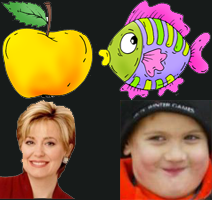
Face recognition is a difficult visual task. Most objects are identified merely by type, apple and fish. But faces are identified at the individual level, “Jane” and “Tommy”, with all faces consisting of the same kinds of features, two eyes, a nose, and a mouth in the same configuration, eyes above nose, nose above mouth. Dynamic facial expressions increase the challenges further.
Untrained face recognition ability is highly inherited. Face blindness or prosopagnosia is the inability to recognize faces. Developmental prosopagnosia affects 2-2.5% of the total population and 40% to 66% of people with autism and Asperger’s. Other people get prosopagnosia through trauma and stroke. Face recognition ability declines with age. Fortunately face recognition skills can be learned with explicit teaching.
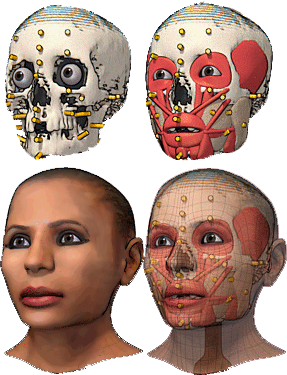
Forensic facial reconstructions use the shape of the skull, age, gender, stature, ancestry to make replicas of a person's face. Adult eyes are all roughly the same size. Their appearance changes with depth within the eye socket. Facial reconstructions have been demonstrated to be accurate using computed tomography skull information with live subjects. The average error was 0.42 mm, yielding recognizable features. This shows a person identification is determined by static features of the face.
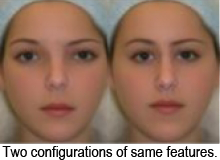
A novice will focus on all features of an object individually, with more or less the same intensity. Motion causes the novice to focus on the largest moving features, not necessarily the key features. But configuration of the features provides key information. A visual expert does fast holistic-configural processing, then focuses on key features for that object type. They retain focus on key features even with motion.
What is different in the brain of a novice verses an expert? The visual and attentional short term memory (VSTM and ASTM) can be increased up to 50% with training, but the real gain comes by chunking independent features from different dimensions, e.g., color and shape, which is stored and accessed as a single complex feature. Further condensing of information comes by the storing information in the frequency domain rather than spatial, which removes scale and orientation. The brain uses this strategy as it gains greater expertise.
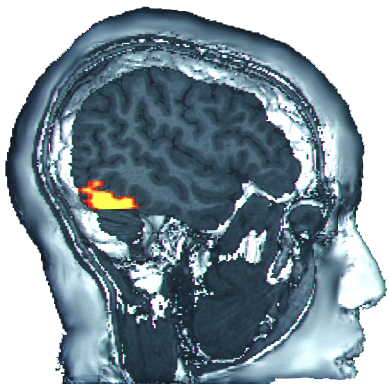
The specialized area for visual expertise is the fusiform gyrus. As a child learns to read, letter and word recognition dominates the left fusiform gyrus, visual word form area. Face recognition ability develops in the right fusiform gyrus, face fusiform area (FFA). The hemispheric organization of face and word recognition appear to not develop independently.
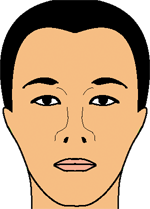
The complex features of a person’s face are encoded as the difference from a prototypical, average face template. These templates are developed for different genders and races.
People with prosopagnosia/ASD make use of the FFA only for faces of loved ones, where they have expertise, but less so with faces of others. They process faces of others in the general object id regions of the brain using a more novice strategy.
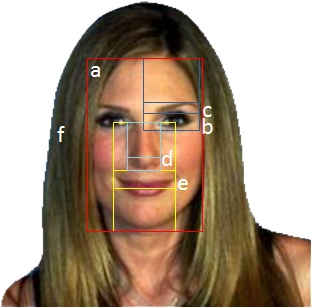
Adults can detect subtle changes in the configuration of facial features as small as 1 min of visual angle. This approaches the limits of normal visual acuity, illustrating again that it is a challenging visual task. The configural information is clumped into complex features including the distance relationships between the major parts plus:
- a) head shape and hairline
- b) shape, locations, and color of the eyes,
- c) height and texture of the brows,
- d) length, width, and shape of the nose,
- e) location of mouth and thickness of lips,
- f) alignment and shape of the ears.
There are major gender differences: females have higher brows, thicker lips, a different hairline, and a rounder chin relative to males. These are processed first along with skin color to select the correct “template”. Finally the focus goes to the key features, first the eyes, then the mouth.
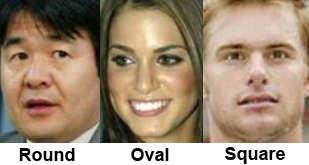
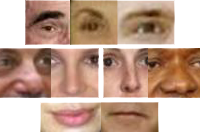
The face shape varies from round to oval to square. Eyebrows vary from barely visible to bushy uni-brows. Eyes come in different colors and shapes. Nose shapes vary the most, from large to small, pointed to flat, upturned to downturned and hooked. Lips vary from thick to thin.
